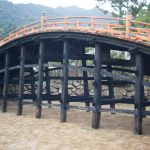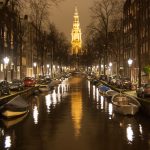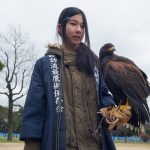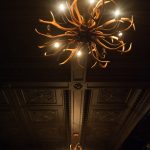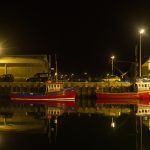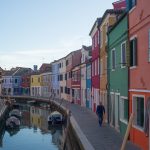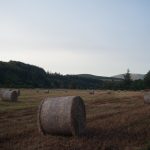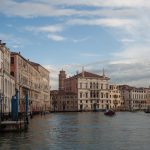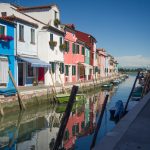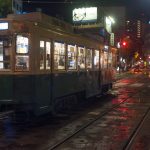P. Angenieux Paris 35mm F/2.5 [Retrofocus] Type R1
Wide-angle prime lens • Film era • Discontinued
Sample photos (29)
Model history (2)
| ■P. Angenieux Paris 35mm F/2.5 [Retrofocus] Type R1 | M | 6 - 5 | S.VIII | 1950 ● | ||
| ■P. Angenieux Paris 35mm F/2.5 Retrofocus Type R1 | A | 6 - 5 | 0.80m | S.VIII | 1959 ● | |
Specification
| Optical design: | |
| 35mm full frame | |
| 35mm | |
| F/2.5 | |
| 6 elements in 5 groups | |
| Exakta [44.7mm] | |
| M42 [45.5mm] | |
| 63.4° (35mm full frame) | |
| Diaphragm mechanism: | |
Diaphragm type: | Manual |
Aperture control: | Aperture ring |
| 12 (twelve) | |
| Focusing: | |
| <No data> | |
| <No data> | |
Focusing modes: | Manual focus only |
Manual focus control: | Focusing ring |
| Physical characteristics: | |
| 312g (Exakta) | |
| ⌀?×69.8mm (Exakta) | |
| Accessories: | |
| Series VIII | |
| <No data> | |
| <No data> |
Source of data
- EXAKTA unlimited booklet.
Manufacturer description #1
The introduction in 1950 of the RETROFOCUS wide-angle lenses has been widely recognized as one of the most important events in the history of photography. The significance of this event was proven by the early enthusiastic acceptance given to the RETROFOCUS and is now more than ever apparent by its continually growing success on the market.
The RETROFOCUS was the first product resulting from a planned series of entirely new types of lenses. In offering them to you, we feel that in addition to their superior advantages, you will also be interested to know what photographic needs originally led to their creation.
The initial problem we had to solve arose from the ever increasing use of miniature single lens reflex cameras. They were not equipped to use wide angle lenses with extremely short focal lengths - an inherent difficulty with all cameras of this type - and a satisfactory solution was generally considered impossible until the introduction of the RETROFOCUS.
The f/2.5 RETROFOCUS 35 mm lens, our first product, was followed by the f/3.5 RETROFOCUS 28 mm lens. The field covered by the RETROFOCUS 28 mm is 74 degrees (as compared with 64 degrees for the RETROFOCUS 35 mm) and its back focal length is about 38 mm. The pictures rendered by both lenses are perfect, without distortion, and their over-all quality comparable to results obtained from the finest lenses available on the market.
The same problem existed with miniature single lens cameras in connection with the use of very fast 50 mm lenses. Again, miniature cameras did not permit their use with very large openings. To overcome this difficulty, our new 50 mm 1:1.5 lens is now available. This new introduction fills this particular need in the miniature camera field.
The remarkable performance of the three types of lenses which are now on the market, the 28 mm, the 35 mm and the 50 mm focal lengths add immeasurably to the versatility of the 35 mm reflex cameras. In addition, and because of their exceptional quality, these lenses are currently being used with equal success with cameras of widely different types.
Lenses of longer focal lengths than the types afore mentioned, have been adapted, without any difficulty, for the 35 mm single lens reflex cameras. Our objective, therefore, was to find a formula which allowed increase of speed without making the lenses too bulky. As a result, we now have the new lens types P1 and P2, with outside measurements kept to a minimum. The quality of these types was immediately appreciated by even the most discriminating of experts, and used with complete success in the photographic world.
Judging from the encouraging comments constantly received, our chosen determination to avoid the beaten path in search of better and more versatile lens equipment has been eminently successful. As a result of this acclaim, we intend to follow this line of conduct and search for new ideas and designs.
Manufacturer description #2
ANGENIEUX 28MM AND 35MM RETROFOCUS WIDE ANGLE LENSES
From the world-famous laboratories of French lens-maker Pierre Angenieux have come two wide angle lenses for the Exakta which have startled the photographic world. These lenses are of an entirely new type, which makes them unique in the field of photography. All the postwar advances in lens design and construction have been built into these Angenieux lenses with amazing results. You can virtually see the difference in your pictures when you use an Angenieux Retrofocus lens!
Their high speed and even distribution of light over the entire field makes Retrofocus lenses especially suited for color photography. Loss of light at the edges of the picture is non-existent. All aberrations are fully corrected and the pictures are remarkably clear!
Extreme wide-angle coverage, a valuable asset to the miniature camera user may be obtained with either of the Retrofocus lenses. Both lenses will cover a huge area. The 28-mm Retrofocus lens has an angle of view of 74°. The 35-mm Agenieux Retrofocus lens has an angle of view of 64°. Even when focused upon a near object, the depth of field is extreme with both Retrofocus lenses. The black lightweight Retrofocus mount has duplicate diaphragm stops and distance scales on both sides engraved in white to simplify adjustments.
Manufacturer description #3
Einäugige Spiegelreflex-Kameras vom Typ der EXAKTA Varex setzten bisher dem Gebrauch von Weitwinkel-Objektiven mit kurzer Brennweite eine bestimmte Grenze, weil der hochklappende Spiegel in seiner Bewegung nicht behindert werden durfte. Diese Schranke zu durchbrechen gelang erst neuartigen Spezial-objektiven, bei denen die Brennweite kürzer ist als die Schnittweite (= Entfernung von der Glasfläche der Hinterlinse bis zum Brennpunkt). Zu derartigen für einäugige Spiegelreflex-Kameras entwickelten Konstruktionen gehören auch die beiden Rétrofocus-Objektive aus den Optischen Werkstätten von Pierre Angénieux, Paris. Beide Linsensysteme werden in Spezialfassung zur EXAKTA Varex und den früheren Modellen passend geliefert, haben eigenen Schneckengang zur Naheinstellung, eine Tiefenschärfenskala und sind selbstverständlich mit reflexmindernder Oberflächenvergütung versehen. Trotz großem Bildwinkel und hoher Lichtstärke zeichnen die beiden Objektive das ganze Negativ gleichmäßig tadellos scharf aus. Bei den mannigfaltigen Aufgaben, die das Erfassen eines großen Bildwinkels bedingen (Innenaufnahmen, Architekturen usw.), sind die Rétrofocus-Objektive am Platze und natürlich auch dort, wo aus besonderen Gründen bei relativ großer Öffnung eine sehr günstige Tiefenschärfe verlangt wird.
***
Single-lens reflex cameras of the EXAKTA Varex type previously set a certain limit on the use of wide-angle lenses with a short focal length because the returning mirror could not be hindered in its movement. It was only possible to break through this barrier with new types of special lenses in which the focal length is shorter than the back focal length (= distance from the glass surface of the rear lens to the focal point). Such designs developed for single-lens reflex cameras also include the two Rétrofocus lenses from the optical workshops of Pierre Angénieux, Paris. Both lens systems are supplied in a special version to match the EXAKTA Varex and the earlier models, have their own worm gear for close-up adjustment, a depth of field scale and are of course provided with an anti-reflection coating. Despite the large image angle and high speed, the two lenses ensure that the entire negative is perfectly sharp. The Rétrofocus lenses are appropriate for the diverse tasks that require the capture of a large image angle (interior photos, architecture, etc.) and of course also where a very favorable depth of field is required for special reasons with a relatively large aperture.
Manufacturer description #4
TYPE R11 28 mm f3.5 and TYPE R1 35 mm f2.5:
These lenses are of an entirely new type, which makes them unique throughout the camera world. The distance between the rear element and the film is longer than the focal length, and therefore, they can easily be adapted to all types of 24 x 36 mm reflex cameras.
Their high speed and even distribution of light over the field make them especially suited for color photography. Loss of light at the edges of the picture is considerably less with the Angenieux lens than with ordinary wide-angle lenses (set at identical speeds). All aberrations are fully corrected and the pictures are remarkably clear, without any distortion whatsoever.
From the Exakta magazine (Summer 1950)
In response to a long-time need and demand by KINE-EXAKTA owners, KINE-EXAKTA has added a new and unique lens to its family of lenses the Retrofocus f 2.5, with a wide angle and 35 mm focal length.
Miniature camera owners for years have sought a lens that would offer three very important advantages - high speed and large aperture, wide angle and short focal length. For technical reasons, it has been impossible to use shorter lenses than 40 mm with the KINE-EXAKTA. Out of the laboratories of famous Paris lensmaker Pierre Angenieux has come the answer at last - the Retrofocus - and it is available now exclusively to KINE-EXAKTA owners.
The Retrofocus is an inverted telephoto objective with a very large aperture, a design unknown until now. Wide open at f 2.5, it can be used with the greatest success for high-speed and dim light photography.
It can also be used for all normal photographic needs and may be closed down to f 22. The lens has excellent definition throughout its entire coverage area and furnishes photographs that are crisp and sharp over the entire negative area.
Extreme wide angle coverage, an invaluable asset to the miniature camera user, may be obtained with the Retrofocus. The lens has an angle of 64° as compared with 45° to 40° of 50 mm and 58 mm lenses and will cover a huge area even when focused upon a near object.
Depth of field, which miniature camera owners are constantly seeking to increase, is extreme with the Retrofocus.
The Retrofocus is coated, of course, and comes in an attractive black-and-chrome, lightweight mount with bayonet fittings so that it can be inserted in the original EXAKTA camera mount.
An unusual feature of the Retrofocus is the duplication of the diaphragm stop and distance indicators on both sides of the mount.
From the Film and Digital Times magazine (Special Report - October 2013)
1950. Design and manufacturing of wide angle Retrofocus lenses for 24x36mm format still photography. These lenses used an inverted telephoto design, with a negative lens group at the front that increased the back focal distance. The first lenses were intended for rangefinder cameras, but the added distance was a boon to accommodate the extra room occupied by mirror mechanisms in the emerging technology of single-lens reflex cameras.
The first Angénieux Retrofocus still format lens was the R1 series, 35 mm f/2.5, introduced in 1950.
Angénieux Retrofocus lenses came in focal lengths of 24 mm, 28 mm, and 35 mm. The R11 28 mm f/3.5 came in 1953, followed by the R51 / R61 24 mm f/3.5 in 1957.
***
A single-lens reflex (SLR) still camera requires the lens to be further from the image plane. Otherwise, the camera’s mirror would hit the rear element. For example, the flange focal distance of a Leica rangefinder was 27.80 mm, while the flange focal distance of a Praktica SLR was 44.4 mm.
LENS-DB: In fact, the flange focal distance of Leica rangefinder cameras is 28.80mm, and that of Praktica SLR cameras is 45.5mm.
This extra distance limited the use of traditional wide angle lenses. Retrofocus lenses solved this by being able to increase the back focal distance.
Pierre Angénieux’s Retrofocus design allowed the use of wide-angle optics on the interchangeable-lens SLR cameras that were coming to market at the time: Exacta, Praktica, and Contax in Germany, Alpa in Switzerland, Rectaflex in Italy, and later, Canon and Nikon in Japan.
LENS-DB: When referring to Canon SLR cameras, the author means Canonflex series cameras with the Canon R breech-lock mount, introduced in 1959.
Angénieux was building around 45,000 Retrofocus lenses a year in the 1950s. It’s been said that Angénieux’s design inspired the other lens manufacturers to produce wide angle lenses for almost every 35mm SLR and spinning mirror reflex motion picture camera that would follow. Only in the past few years, with the potential of good electronic viewfinders, have we seen a return to shorter flange focal distances.
From the Popular Photography - ND magazine (October 1951)
A new and welcome departure in wide-angle lens design is provided by the 35-mm Angenieux Retrofocus lens (f/2.5) now being furnished as an accessory for the various 35-mm Exakta cameras. By inverting the principles of telephoto lens design, the manufacturers of this lens have created an objective which can be mounted in a barrel considerably longer than its effective focal length. It can therefore be used with single-lens reflex cameras without interfering with the mirror movement, which is utterly impossible with ordinary wide-angle lenses.
From the editor
The lens was produced for Exakta, Exa, Praktica 35mm SLR cameras, and, MOST LIKELY, for Canonflex, Nikon, Rectaflex 35mm SLR cameras.
The closest focusing distance is 3 ft. for lenses with distance scale in feet and 1m for lenses with distance scale in meters. Since these values differ by as much as 8.56cm, we had to leave the "Closest focusing distance" field in the specification blank.
![P. Angenieux Paris 35mm F/2.5 [Retrofocus] Type R1](https://lens-db.com/wp-content/uploads/2012/03/Angenieux-35mm-F25-08-1160x1120.jpg)
![P. Angenieux Paris 35mm F/2.5 [Retrofocus] Type R1](https://lens-db.com/wp-content/uploads/2012/03/Angenieux-35mm-F25-01-125x150.jpeg)
![P. Angenieux Paris 35mm F/2.5 [Retrofocus] Type R1](https://lens-db.com/wp-content/uploads/2012/03/Angenieux-35mm-F25-02-125x150.jpeg)
![P. Angenieux Paris 35mm F/2.5 [Retrofocus] Type R1](https://lens-db.com/wp-content/uploads/2012/03/Angenieux-35mm-F25-03-150x150.jpeg)
![P. Angenieux Paris 35mm F/2.5 [Retrofocus] Type R1](https://lens-db.com/wp-content/uploads/2012/03/Angenieux-35mm-F25-04-184x145.jpeg)
![P. Angenieux Paris 35mm F/2.5 [Retrofocus] Type R1](https://lens-db.com/wp-content/uploads/2012/03/Angenieux-35mm-F25-05-184x150.jpg)
![P. Angenieux Paris 35mm F/2.5 [Retrofocus] Type R1](https://lens-db.com/wp-content/uploads/2012/03/Angenieux-35mm-F25-06-184x150.jpg)
![P. Angenieux Paris 35mm F/2.5 [Retrofocus] Type R1](https://lens-db.com/wp-content/uploads/2012/03/Angenieux-35mm-F25-07-147x150.jpg)




